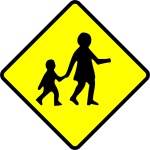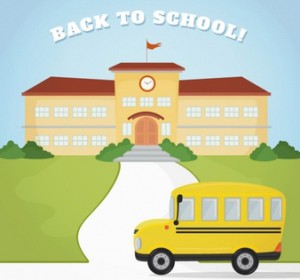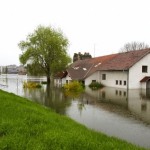So, it’s late August and the time has come for your little ones to pack their school bags and head to classes once again. As always, the start of the school year is certain to cause great excitement and apprehension for both the students and their parents – there are so many things to prepare, so many important topics to discuss, so many fears to assuage, and so many expectations to meet.

Amongst all the anxieties and concerns that you and your children might have at the moment, however, certain important issues call for immediate attention and timely action. Back to school safety definitely tops the list of the most crucial subjects to address at the beginning of the new academic year. Here are some of the most essential safety tips to have in mind when sending your kids back to school.
Walking to School Safety Tips
Quite predictably, it is on the way to and from schools that kids’ safety is most at risk. So, it’s of paramount importance that you find the time to sit down with your little ones for a lengthy discussion regarding their safety on the roads.
If your children walk to school, remind them to:
- Always walk on the sidewalks;
- Look both ways to make sure all drivers have stopped before crossing a street;
- Obey traffic signals and stay in the crosswalk;
- Never dart out into the street or cross between parked cars;
- Never run when crossing a street (they may accidentally trip and fall in the middle of the street);
- Travel with groups of friends whenever possible;
- Avoid strangers and never accept rides from people they don’t know;
- Head straight for home and check in with you before they make plans for the rest of the afternoon.
Make sure your kids know their address, memorize or write down emergency and family phone numbers, and can get in touch with you at work or with another trusted adult if necessary.
Good to remember: As a driver, be extra vigilant behind the wheel during the school year:
1) Drive very carefully and strictly observe the speed limits in school zones;
2) Always obey the crossing guard (even if the traffic lights have already turned green, wait for the crossing guard to indicate that all children have completed crossing the street), as there may be a child on the street that you can’t see;
3) Have in mind that a young child might step out from between parked cars or off a sidewalk at any time – drive with extreme caution to prevent possible accidents;
4) Do not use your cell phone while driving in school zones – this is a violation of the law;
5) Never pass a school bus when the signal lights are flashing (it means that children are crossing the road at that time).
School Bus Safety Tips
If your children take the bus to school, make sure they observe the following safety rules:
When getting on the bus:
- Be at the bus stop on time – don’t arrive too early (this will give the kids plenty of time to wander or get into some kind of trouble) or too late (children should not have to run to get on the bus);
- Wait at the designated stop, away from the road, and stay back until the bus comes to a complete stop and the doors open;
- If you have to cross the street to get on the bus, wait until the traffic stops and the bus driver signals you to cross (still, make sure you look both ways before crossing the street – just in case);
- Don’t push or shove to get on the bus before the others;
- Hold the hand rail when getting on the bus;
- Only board your bus, not an alternate one.
While on the bus:
- Take your seat quickly and don’t put your feet (or your bag) into the aisle as someone might trip;
- Stay seated all the time and don’t stick your head and arms out of the windows;
- Avoid fighting, shouting or playing in the bus;
- Avoid eating and drinking while on the bus, as you may choke if the vehicle goes over a bump;
- Always follow the driver’s instructions.
When getting off the bus:
- Do not push or shove to get off the bus faster;
- Hold the handrail when getting off the bus;
- Never walk behind the bus;
- Cross the street at about 10 feet in front of the bus – make sure the bus driver can see you and all traffic has stopped.
Health and Safety in Schools
To ensure your peace of mind and your kids’ well-being, make every effort to explain to them just how important it is to obey the school safety rules at all times.
Classroom Safety
- Remind your children to be careful while at school in order to prevent accidents and injuries – running down the stairs or along the corridors, jumping around in the classrooms, leaning out of the windows, throwing objects at each other, and other similar reckless actions can easily result in tripping, falling, and hurting oneself (or the others);
- Encourage open dialogue about bullying – talk to your children about bullying and how it can be prevented, teach them to avoid conflicts and to look for “diplomatic” solutions whenever a problem arises, encourage them to report cases of bullying to the school officials, etc.
School Lunch Safety
To prevent foodborne illness, you are advised to:
- Keep snacks and/or lunches that contain perishable food items (such as meats, eggs, cheese, etc.) cold – otherwise harmful bacteria may multiply to dangerous levels and cause foodborne illness. You can either include a cold source in your kid’s lunch box (frozen juice boxes or water, for example) or pack the food in an insulated container (not in a paper bag);
- If possible, arrange for your child’s lunch to be stored in a refrigerator or cooler until lunchtime;
- If packing your child’s lunch in the evening, leave it in the refrigerator overnight;
- Do not reuse packaging because it could contaminate the fresh food;
- Provide disposable wipes and remind your kids to wash their hands before and after eating.
Our back to school safety tips won’t be complete without several words for your kids’ health and safety at home.
Safety Rules at Home
To make sure that your kids will be resting, studying, and playing in a safe environment when they get back from school, you are advised to:
Keep Your Home Secure
If your children will be alone at home, ask them to lock the doors and windows after getting back from school and to double-check if they haven’t left the keys in the door. Teach them how to safely use the electric appliances in your home (especially, sources of heat) and what to do in case of emergency (how to get in touch with you, what emergency phone numbers to call, under what circumstances to evacuate the building, where to look for shelter, etc.)

Keep the Living Environment Clean
The beginning of the school year is the perfect time to get your home clean and tidy:
- Declutter your home – Getting rid of all the unnecessary objects in your home will not only help you get more free space and reorganize your items, but will also result in a healthier living environment (clutter makes it difficult to clean the areas beneath and behind the piled items, which allows dust, bacteria, and various other allergens to accumulate in large amounts in your home);
- Have your carpets and upholstery cleaned thoroughly – A lot of dust, dirt, pollen, and debris accumulate on the furniture and carpeting during the summer. To get rid of all the dirt and harmful allergens and ensure your kids’ good health, you are recommended to have your carpets and upholstery professionally cleaned before the winter. The specialists will use the best cleaning products available in the industry and the most appropriate cleaning methods for the specific type of carpets and upholstery in your home to ensure the best possible results. Then, it will be easy to maintain the sanitary condition of your surroundings by regularly vacuuming and spot cleaning when necessary;
- Keep dirt out of your home – Place doormats near the entrances to your home to reduce the amount of dirt taken inside; wear indoor shoes; clean your pets’ paws after a walk outside; etc. This will allow you to prevent dirt from getting inside and will make it easier to keep your home neat and clean;
- Create a house cleaning checklist for the kids – Get your children involved in the cleaning process and teach them the importance of keeping their surroundings clean and tidy. Have your little ones clean and organize their rooms once a week and give them some other age-appropriate cleaning chores throughout the rest of the house. This way, your kids will get more responsible and more aware of the benefits of a clean living environment, and you will ensure their safety and your peace of mind.




